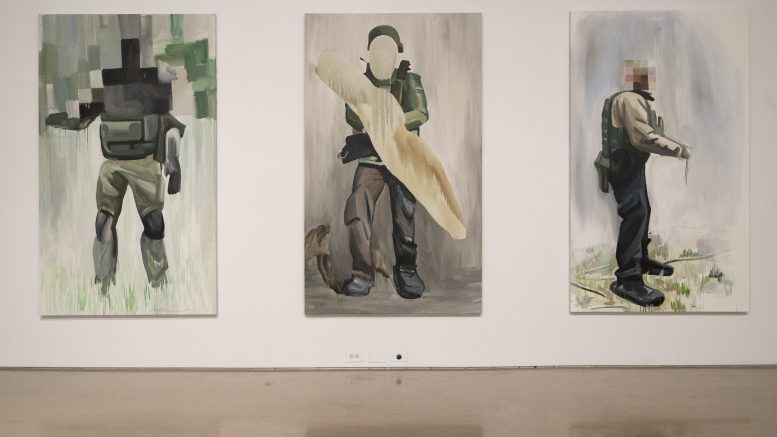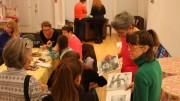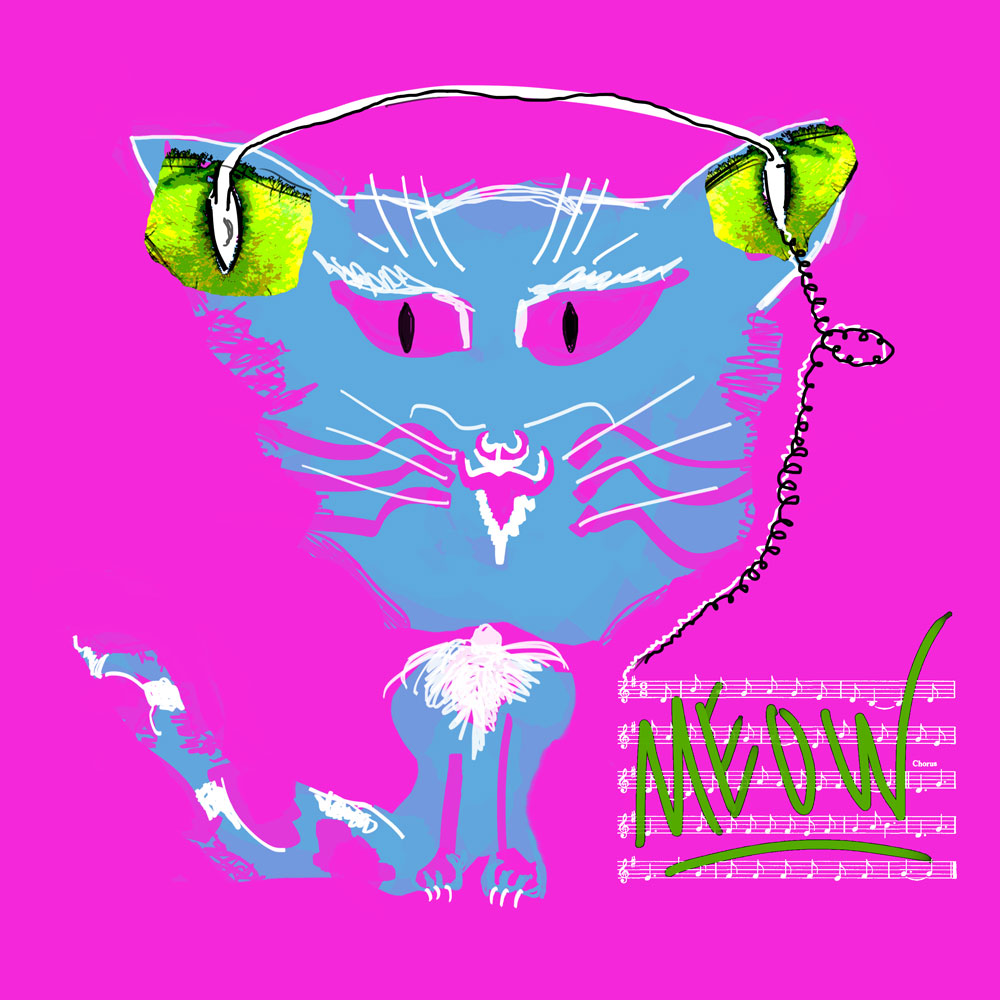Running from Feb. 29 to April 27 in the University of Manitoba’s school of art gallery, Women at War is an exhibit featuring the artistic works of Ukrainian women. A majority of the exhibit focuses on the experiences of women in recent Russian invasions of Ukraine.
Women at War features stories that can be compelling. However, it suffers in two major areas.
First, the content of the exhibit fails to advance women’s agency, or meaningfully comment on the gendered elements of war.
Second, there is a lack of intersectionality and understanding in the exhibit, which exclusively focuses on the experiences of white Ukrainian civilian women, ignoring the experiences of Ukrainians of colour.
The exhibit portrays women as victims. Numerous pieces depict women simply as victims of male violence, with little agency in the greater social context. While the exhibit features numerous stories of women facing hardship in Ukraine, those perspectives mainly show Ukrainian women as being without agency.
In the exhibit, women either serve as passive supporters of male combatants, observers of conflict, victims of displacement or victims of Russian violence. “Max in the Army” and “Untitled 1” through “3” by Lesia Khomenko, specifically centre men with agency, rather than women, on both the Ukrainian and Russian sides.
Some of the most extreme examples depicting women’s lack of agency are the pieces “Lviv Diary” by Vlada Ralko and the series of drawings from “Mother Srebrenica Mother Donbas” by Dana Kavelina.
“Lviv Diary” depicts numerous vaguely sexual and violent images. One image depicts a nude feminine figure with her hands tied behind her back and her face obscured in darkness.
Another image shows a figure with a bloody womb with a hammer and sickle, a famously communist symbol, overlaid atop each other. Considering Russia has not been communist for over 30 years, it is unclear what the purpose of the hammer and sickle is.
Numerous drawings in the “Mother Srebrenica Mother Donbas” series depict surreal scenes of sexual assaults. In each of the drawings in the series women are depicted exclusively as victims with no ability to speak out or retaliate.
While the exhibit is titled Women at War, it would be more appropriate to say that the exhibit regards women as victims of war.
One set of images which I found particularly bizarre was provided by Kateryna Yermolaeva. The pieces, simply referred to as “Photo 1” through “4,” depict four images of the artist amid an identity crisis caused by the conflict in Ukraine.
The artist states that she lost herself “as an artist” which led to her experimentation with identity, particularly gender expression and nonbinary depictions of gender.
While each individual has a different journey with gender identity, to depict androgyny and experimentation with gender identity as the result of war is problematic, reducing something deeply personal and potentially powerful to simply being the result of crisis.
The previous pieces fail to meaningfully advance women’s agency while “Photos” fails to comment on, and borderline insults, queer people.
The exhibit is not outwarly identified as feminist. But, a surface glance at the exhibit could lead viewers to assume that there would be feminist influence or sentiment. However, in terms of feminism, these pieces leave a great deal of intersectionality to be desired.
Not only are women depicted as powerless in a social sense, but even in their personal lives, their gender identity is not their own.
Any mention of military service is also exclusively focused on men, but as of January 2024, there were at least 45,487 women serving in the Ukrainian military.
If the exhibit was about women at war, then it ought to have included the perspectives of those service members, or at least depictions of those service members.
This is especially important considering that women in the Ukrainian military have experienced multiple instances of discriminatory treatment. One particularly egregious event involved an allegation against a commander who sexually assaulted his female subordinates and threatened them with the conscription of their husbands to the front lines if they refused.
The exhibit focuses on some important perspectives, but as it focuses on white civilian women, there are numerous narratives that are excluded, including those of Ukrainians of colour.
It is alarming that Ukrainians of colour are under-represented in this exhibit, especially considering the multiple accounts of racism Black Ukrainian refugees experienced during the start of the Russian invasion.
In an example directly related to the Russian invasion, Russian women have engaged in protests demanding an end to the war, despite these protests being illegal under Russian law. Including a perspective such as this would go a great length in showing women’s agency.
This angle would show that the Russian invasion of Ukraine is being opposed in ways outside of violence or combat. This could also show that nations are not monolithic groups, something that the exhibit needs to expand on.
Inside the New People’s Army, a 2018 documentary by Redfish, has a particularly engaging narrative regarding women at war. This piece does an excellent job of focusing on women’s voices during periods of armed conflict.
The documentary depicts female guerillas within the New People’s Army (NPA), a communist rebel group in the Philippines. One woman within the NPA reveals that she was originally a laborer prior to joining, but uses what she has as an individual to assist where she can.
The role of women during times of conflict is much more nuanced than solely being victims. Women both oppose and participate in armed conflict. Their experiences with war will differ given intersections in their lives, but nevertheless deserve to be spoken about and represented.
Women at War fails to depict these more complex realities.
My intent is not to manufacture consent for war as an equal opportunity arrangement. I do not want anyone to join the army, never mind women.
Rather, I think it is important to depict how women exercise agency in social and historical contexts.
However, since the exhibit fails to include any narrative outside of victimhood, these women’s agency is reduced to commenting on their displacement, experience with violence and personal crises.
Believe it or not, women have a much greater role in our society than enduring the actions of men.





